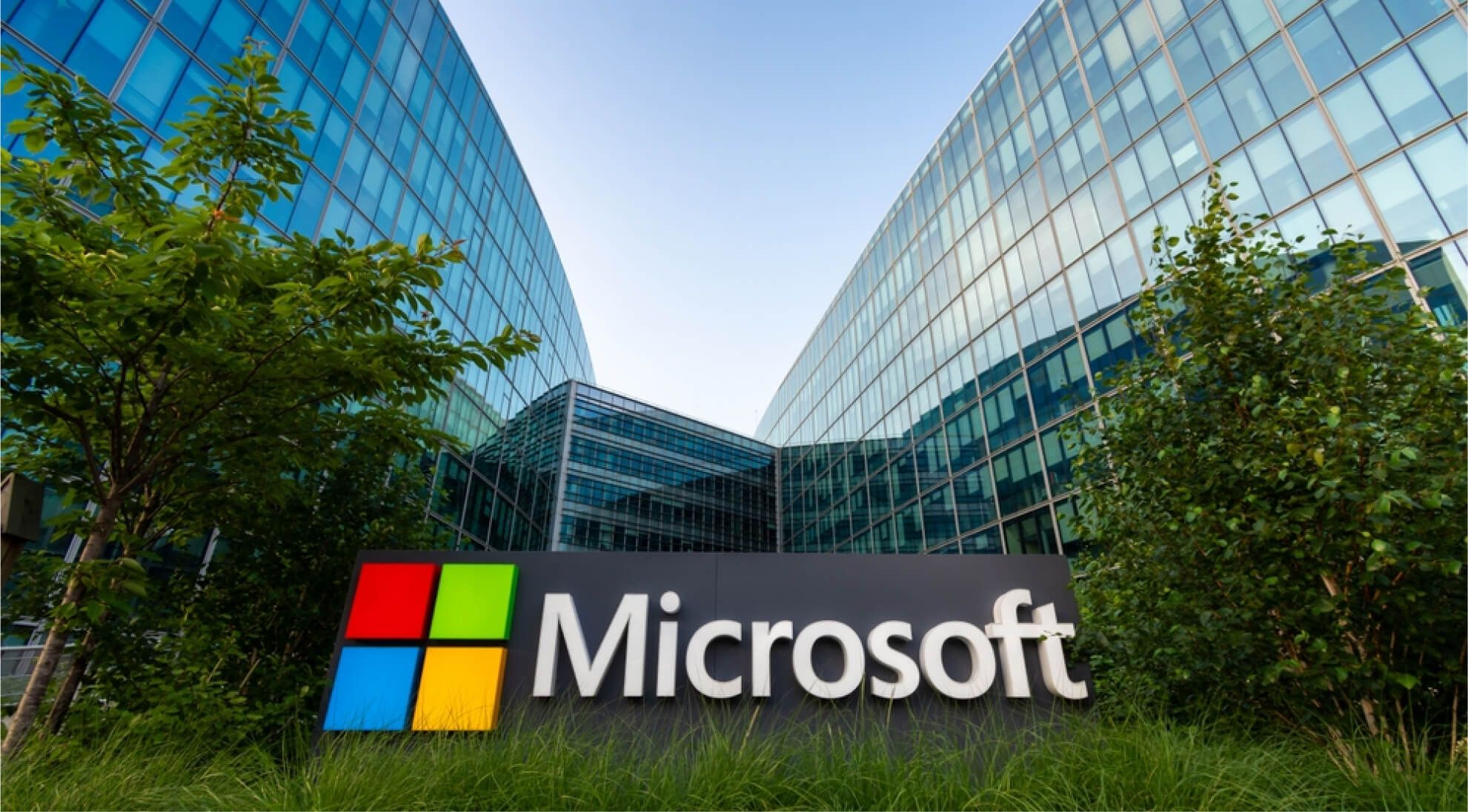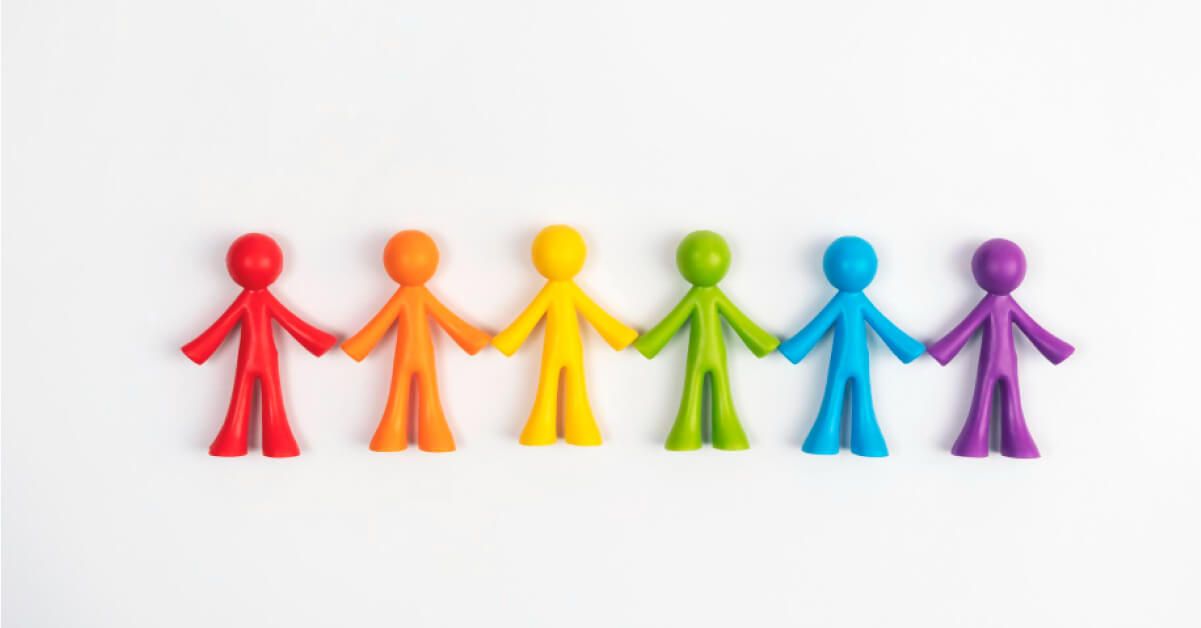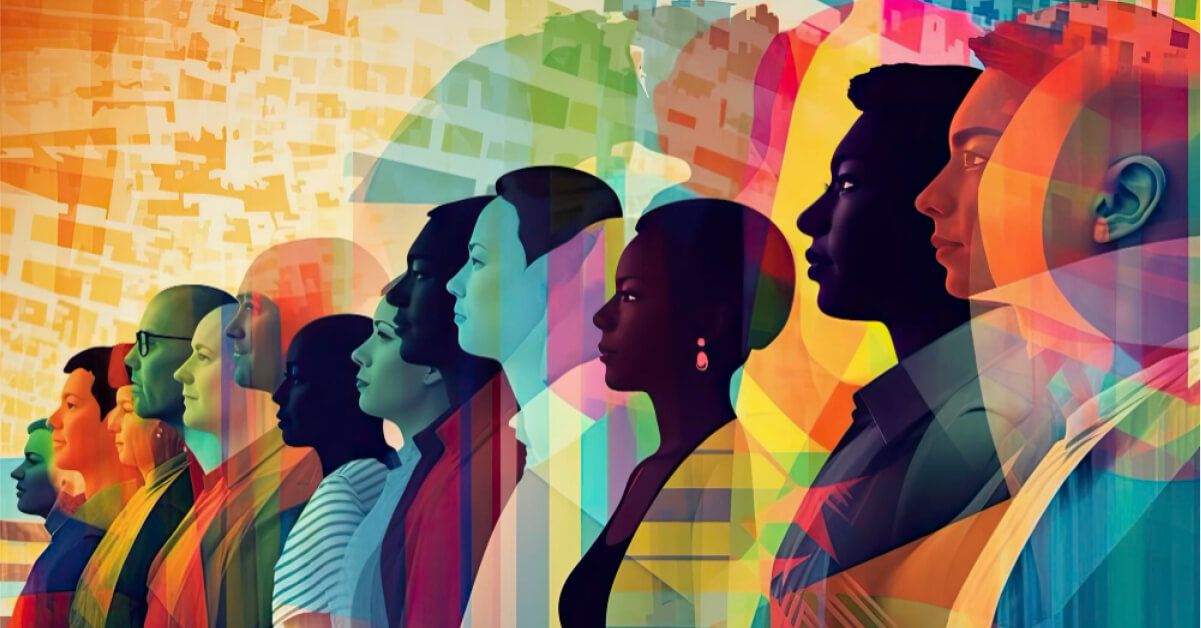What can you learn from Microsoft’s company culture: Key takeaways for leaders

In a world where technology evolves at lightning speed and the next breakthrough is always just around the corner, the core of any successful organization isn’t merely its innovative products or cutting-edge strategies—it’s the people who drive those innovations forward.
In this guide, we’ll dive deep into the essence of Microsoft’s company culture, exploring how it has shaped the tech giant into a leader in both innovation and employee satisfaction.
From the impact of a growth mindset on workplace dynamics to the lessons leaders can learn from Microsoft’s commitment to diversity and inclusion, this journey will equip you with the insights needed to build a thriving organizational culture.
So, picture yourself navigating through the vast landscape of innovation, with Microsoft’s culture as your guide. Join us as we explore how cultivating a strong, inclusive workplace isn’t just beneficial for employee morale—it’s the key to maintaining your organization’s edge in the ever-accelerating world of 2024.
What is Microsoft company culture like?
Microsoft's company's culture has undergone a significant cultural shift, evolving from a competitive, siloed environment to one that prioritizes collaboration, innovation, and continuous learning. This culture renovation has been instrumental in transforming Microsoft into one of the most valuable companies globally.
By aligning its human resources strategy with the broader business needs, Microsoft has successfully enhanced employee engagement and created a workplace where diversity and inclusion are at the forefront. This inclusive environment not only fosters creativity but also drives customer satisfaction by ensuring that products and services meet diverse needs.
Employees are encouraged to take risks, experiment, and learn from failures, creating a culture of continuous improvement that supports both personal growth and the company’s long-term success.
At its core, Microsoft’s culture thrives on a growth mindset—believing everyone can learn and evolve. It’s built on four key pillars: customer obsession, inclusive practices, unified teamwork across the business, and a commitment to making a meaningful impact on colleagues, customers, and the world.
Why is Microsoft's company culture so compelling?

Microsoft's transformation from a culture of "know it alls" to "learn it alls" is at the heart of its culture renovation, turning it into a valuable company that thrives on innovation and collaboration.
This new culture has shifted the focus from individual competition to a "One Microsoft" mentality, where co-workers work together to generate new ideas aligned with the company’s business goals. By fostering a "customer obsessed" mindset, Microsoft ensures that employees create products that meet market demands and exceed customer expectations.
In this environment, employees are not just authentic slaves to routine but are encouraged to take ownership, experiment, and learn from failures, reinforcing Microsoft’s position as a leader in innovation and inclusivity.
What is Microsoft's mission and vision statement?
Under the leadership of CEO Satya Nadella, Microsoft has undergone a significant transformation, fostering a new culture that prioritizes respect, collaboration, and continuous learning.
Unlike the earlier era under Steve Ballmer, where the company was known for its intense internal competition, this new approach has turned Microsoft into a diverse and inclusive environment.
Kathleen Hogan, Microsoft's Chief Human Resources Officer, has played a crucial role in shaping this culture by focusing on the development of managers and empowering talented people to grow their skills.
This shift has been essential to the company’s success, enabling it to meet the diverse needs of its customers while staying competitive in the global business landscape. Employees are no longer seen as authentic slaves to rigid corporate expectations but as vital contributors to Microsoft’s ongoing innovation and growth.
At the heart of this transformation lies Microsoft’s mission: “to empower every person and every organization on the planet to achieve more.” This guiding principle reinforces every cultural change and business decision, shaping a future-focused organization driven by purpose and people.
Unique characteristics & traits of Microsoft company culture

Microsoft's company culture is defined by its embrace of a growth mindset, a deep commitment to diversity and inclusion, and a strong focus on customer-centric innovation. These traits have not only enhanced employee satisfaction but also played a pivotal role in driving Microsoft's organizational success.
- New culture: Microsoft’s new culture emphasizes the importance of employees bringing their authentic selves to work, which is essential for fostering a diverse and inclusive environment.
- Skills development: The organization is focused on continuous learning, providing access to training and resources to help workers enhance their skills and achieve business goals.
- Customer-centricity: Microsoft prioritizes delivering value to customers through innovative technology and customer-focused strategies.
- Collaboration: The company promotes teamwork across all levels, with managers and teams working together to drive success.
- Talent management: Microsoft recognizes the importance of nurturing talent within its workforce, ensuring that every aspect of management and organization is aligned to create a thriving, innovative business.
What can we learn from the organizational structure in Microsoft?
Microsoft's organizational structure emphasizes agility and collaboration, enabling teams to innovate rapidly while maintaining alignment with the company's strategic goals. By empowering leaders and fostering cross-functional teamwork, Microsoft drives sustained growth and adaptability.
- Employee development: Microsoft invests heavily in training programs to help employees develop new skills and stay ahead in the rapidly changing world of technology.
- Customer focus: The company is committed to creating solutions that meet the needs of its customers, ensuring that every person has the ability to achieve their business goals.
- Workforce collaboration: A key aspect of Microsoft's management approach is fostering a collaborative environment where workers across all levels can contribute to innovative solutions.
- Flat hierarchy: Microsoft’s organizational structure is designed to be agile, reducing barriers between management and employees, which is essential for quick decision-making and innovation.
- Talent management: The company’s research and development programs are focused on helping businesses and individuals achieve success by leveraging the latest technology and developing new things.
The role of empathy in Microsoft’s leadership philosophy
Empathy is at the heart of Microsoft’s cultural transformation, shaping how leaders connect with employees, customers, and partners. Under Satya Nadella’s leadership, empathy became a cornerstone of Microsoft culture, reshaping the company’s identity from within.
- Human-centered leadership: Nadella emphasized that leaders must view employees not just as resources, but as individuals with emotions, aspirations, and personal lives. This shift created a more compassionate Microsoft work environment where inclusion and psychological safety thrive.
- Emotional intelligence as a strategic asset: By championing emotional intelligence, Nadella helped redefine leadership across the company. Managers are trained to listen actively, understand diverse perspectives, and respond thoughtfully—practices that are now deeply woven into Microsoft corporate culture.
- Empathy-driven innovation: Microsoft began designing products that addressed real human needs, especially in accessibility and collaboration. This empathy-first mindset fuels Microsoft organizational culture, ensuring technology is developed with diverse users in mind.
- Manager enablement programs: Through workshops and ongoing leadership development, empathy is nurtured at all levels. These programs reinforce Microsoft culture and values, ensuring empathy translates into daily interactions and decisions.
- Culture of open dialogue: Regular check-ins, transparent town halls, and open feedback loops have become key elements of Microsoft’s leadership style, making empathy a lived value, not just a leadership buzzword.
Microsoft’s manager expectations: Coaching vs. Commanding
At Microsoft, the traditional command-and-control style of management has been replaced by a coaching-centered approach. This evolution is central to Microsoft workplace culture, where trust, empathy, and empowerment drive performance and innovation.
- Emphasizing the coach mindset: Managers are expected to act as coaches, not bosses. This approach focuses on unlocking potential rather than giving orders, aligning closely with the mission of Microsoft corporation to empower every person and organization on the planet.
- The Coach Care Model: Widely used across teams, this model trains managers to "Model, Coach, and Care." It promotes behaviors rooted in empathy, clarity, and accountability—values tightly connected to Microsoft core values and the company’s inclusive leadership philosophy.
- Building psychological safety: By fostering open communication and feedback, Microsoft managers create a space where employees feel safe to share ideas, ask questions, and admit mistakes. This is foundational to the culture at Microsoft and directly impacts innovation and engagement.
- Personalized development plans: Managers work with individuals to create growth paths tailored to strengths and career goals. This coaching dynamic reinforces trust and is embedded in the Microsoft corporation management structure.
- Feedback over authority: Microsoft encourages ongoing, two-way feedback rather than one-way directives. This creates continuous learning loops that empower teams and sustain a thriving workplace.
Microsoft’s culture and its impact on employer branding
A strong internal culture isn’t just about employee satisfaction—it’s a strategic asset that shapes how a company is perceived by the world. Microsoft exemplifies this, where the internal values and behaviors directly enhance its global reputation as an employer of choice.
- Aligning culture with purpose: Microsoft’s culture is closely tied to the Microsoft mission of empowering every person and organization. This alignment ensures that internal actions consistently reflect the company’s broader purpose, making the brand more credible to prospective talent.
- Living the Microsoft principles: The company embeds its core values—integrity, accountability, and respect—into daily practices. These Microsoft principles form the foundation of trust both inside and outside the organization, strengthening its image as a values-driven employer.
- Promoting inclusivity and well-being: By fostering a diverse, supportive workplace environment, Microsoft demonstrates care for its people. This reputation spreads organically through employee advocacy, social platforms, and employer reviews.
- Driving visibility through leadership: Leaders embody the Microsoft culture transformation, sharing transparent, empathetic messages that reinforce authenticity and build external trust.
- Creating brand ambassadors: Empowered employees become natural advocates. When people thrive at work, they amplify the company’s culture to networks and candidates—enhancing Microsoft's employer brand globally.
Pros and cons in Microsoft company culture
Explore the pros and cons of Microsoft's company culture, highlighting the strengths that drive success and the challenges that need attention to maintain a balanced work environment.
Pros:
- Innovation-driven: Microsoft’s culture prioritizes innovation, encouraging employees to experiment and develop new skills, which leads to the creation of cutting-edge products and services that benefit businesses and customers alike.
- Employee empowerment: The company’s growth mindset and focus on training allow employees to enhance their abilities, take ownership of their work, and contribute meaningfully to the organization’s success.
- Diversity and inclusion: Microsoft’s commitment to diversity ensures a rich exchange of ideas among teams, driving creativity and effective problem-solving across the workforce.
- Work-life balance: With flexible working arrangements and a focus on employee well-being, Microsoft fosters high job satisfaction, supporting workers in balancing their professional and personal lives.
Cons:
- High expectations: The emphasis on continuous improvement and high performance can lead to stress and burnout for some employees, affecting their overall job satisfaction.
- Complex organizational structure: While the flat hierarchy promotes collaboration, it can sometimes result in unclear responsibilities and communication challenges within teams.
- Intense work environment: The fast-paced, innovation-driven culture requires employees to constantly adapt and keep up with rapid changes, which can be demanding and overwhelming.
How is Microsoft culturally relevant to diversity at work?

Microsoft is a leader in promoting diversity and inclusion within the workplace, reflecting its commitment through various aspects of its organizational practices.
The company’s dedication to these values is evident in its inclusive hiring practices, active support for employee resource groups, and targeted initiatives to assist underrepresented communities.
By prioritizing diversity, Microsoft creates an environment where all employees feel valued, which enhances their ability to contribute effectively. This focus not only drives innovation but also strengthens the company’s business outcomes by leveraging a wide range of skills and perspectives.
Through ongoing research and development, Microsoft ensures that it remains culturally relevant in a globalized world, attracting top talent and enhancing its ability to meet diverse customer needs and achieve business success.
What are the core values in Microsoft culture?
These principles guide the company in fostering a collaborative and customer-focused environment, driving both employee and organizational success.
Integrity and honesty
- Prioritizes ethical behavior and transparency in all dealings.
- Ensures trust and reliability within the organization and with customers.
Accountability
- Encourages employees to take ownership of their actions and responsibilities.
- Promotes a culture of responsibility and reliability.
Passion for technology
- Drives Microsoft’s commitment to technological innovation.
- Central to the company’s mission and vision, influencing all aspects of business strategy.
Openness
- Promotes open communication and collaboration internally and externally.
- Facilitates effective teamwork and transparency within the organization.
Diversity and inclusion
- Values and respects diverse perspectives.
- Fosters an inclusive environment where all talent can contribute and thrive.
These core values collectively shape a culture that is ethical, inclusive and focused on innovation, enhancing the company's ability to achieve business success and meet customer needs.
How did Microsoft reboot its culture?
Microsoft’s cultural reboot began with the appointment of Satya Nadella as CEO in 2014. Nadella introduced a new leadership style that emphasized empathy, collaboration, and a growth mindset.
He moved the company away from its previous “know-it-all” culture to a “learn-it-all” culture, encouraging employees to embrace continuous learning and experimentation.
This shift was accompanied by a renewed focus on customer-centricity, diversity, and inclusion. Under Nadella’s leadership, Microsoft also prioritized employee well-being, offering flexible work arrangements and support for mental health.
These changes have helped transform Microsoft’s culture into one that is dynamic, inclusive, and innovative.
5 Microsoft company culture examples to inspire building your organizational culture
Discover five inspiring examples from Microsoft's company culture that can help you shape a thriving organizational environment. These examples highlight key practices that promote innovation, collaboration, and employee engagement.
1. Growth mindset in action
Microsoft’s emphasis on a growth mindset encourages employees to embrace challenges and learn from failures. This approach fosters innovation and continuous improvement, making it a key driver of the company’s success.
2. Diversity and inclusion initiatives
Microsoft’s commitment to diversity and inclusion is evident in its employee resource groups, mentorship programs, and initiatives to support underrepresented communities. These efforts create a workplace where everyone feels valued and included.
3. Customer-centric approach
Microsoft places the customer at the center of its business strategy, focusing on delivering value through its products and services. This customer-centric approach drives innovation and ensures that the company remains relevant in a rapidly changing market.
4. Collaborative work environment
Microsoft’s flat organizational structure promotes collaboration across teams and departments, fostering a culture of innovation. This collaborative approach ensures that diverse perspectives are considered in decision-making.
5. Flexible work arrangements
Microsoft’s emphasis on work-life balance is reflected in its flexible working arrangements, which allow employees to balance their personal and professional lives. This focus on employee well-being contributes to high job satisfaction and productivity.
10 Lessons to learn from Microsoft company culture
Microsoft's company culture offers valuable insights for organizations looking to enhance their workplace environment. Explore these ten key lessons to transform your own company culture and achieve long-term success.
- Embrace a growth mindset: Encourage continuous learning and development to drive innovation and adaptability.
- Prioritize diversity and inclusion: Create an inclusive workplace that values diverse perspectives and experiences.
- Focus on customer-centricity: Keep the customer at the center of your business strategy to ensure relevance and success.
- Foster collaboration: Break down silos and promote cross-functional collaboration to drive innovation.
- Promote ethical leadership: Uphold strong ethical standards and lead with integrity and transparency.
- Empower employees: Give employees the autonomy to take ownership of their work and contribute meaningfully.
- Support work-life balance: Offer flexible working arrangements to support employee well-being and productivity.
- Encourage risk-taking: Create a safe environment where employees can experiment and learn from failures.
- Adapt organizational structure: Design a structure that supports agility, collaboration, and fast decision-making.
- Lead with empathy: Cultivate a leadership style that values empathy, understanding, and human connection.
How culture assessment surveys strengthen workplace environments
Understanding your company’s culture is no longer optional—it’s essential for long-term success. A culture assessment survey offers a structured way to evaluate the health of your workplace and make data-driven improvements.
- Identifying cultural gaps: Culture surveys reveal disconnects between leadership’s vision and employees’ day-to-day experiences. These insights help organizations pinpoint what’s working and what needs transformation.
- Improving employee engagement: When employees feel heard through surveys, they’re more likely to stay engaged and committed. Regular assessments signal that the organization values their input, fostering a stronger sense of belonging.
Aligning values with behaviors: Surveys help ensure that company values aren’t just words on paper but are reflected in real behaviors and decision-making. This alignment supports ethical conduct and strategic clarity across the business. - Shaping leadership development: Results from culture assessments can highlight leadership strengths and blind spots. This data guides targeted coaching and training that reinforces a healthy, productive culture.
- Driving continuous improvement: Culture surveys serve as benchmarks for progress. By tracking trends over time, companies can measure the effectiveness of cultural initiatives and adapt quickly to employee needs and business goals.
Conclusion
Microsoft’s company culture exemplifies how a focus on growth, collaboration, and inclusion can drive organizational success. By embracing a growth mindset, prioritizing diversity, and fostering a customer-centric approach, Microsoft has created a workplace that is both innovative and inclusive.
Leaders looking to build or transform their own company cultures can draw valuable lessons from Microsoft’s journey. Incorporating tools like CultureMonkey’s diversity and inclusion software can provide additional support in creating a thriving and dynamic work environment.
Whether it’s encouraging continuous learning, promoting collaboration, or supporting employee well-being, the key takeaways from Microsoft’s culture offer a roadmap for achieving success in 2024 and beyond.
FAQ
1. How did Satya Nadella change Microsoft’s company culture?
Satya Nadella reshaped Microsoft's company culture values by embedding empathy, continuous learning, and collaboration at every level. He moved the organization from a competitive, siloed mindset to a unified, growth-oriented culture. By evolving the Microsoft organizational structure to support agility and teamwork, Nadella fostered innovation, boosted employee morale, and positioned Microsoft as a leader in inclusive workplace transformation.
2. What is the growth mindset at Microsoft?
The growth mindset at Microsoft promotes learning through curiosity, effort, and resilience. It encourages employees to see challenges as opportunities and failures as lessons. This mindset, embedded in Microsoft values and culture, transforms how teams collaborate, innovate, and adapt. It has redefined success at Microsoft by prioritizing development over perfection and learning over fixed outcomes.
3. How does Microsoft ensure diversity and inclusion?
Microsoft ensures diversity and inclusion through intentional hiring practices, employee resource groups, and inclusive leadership training. The company invests in initiatives that support underrepresented communities, both internally and externally. Regular assessments, transparent reporting, and a strong focus on creating a safe, respectful environment help ensure every employee feels valued, heard, and empowered to contribute fully.
4. What makes Microsoft’s company culture unique compared to other tech giants?
What makes Microsoft’s company culture unique is its deep commitment to empathy, continuous learning, and collaboration. Unlike many tech giants, the organizational culture of Microsoft emphasizes a growth mindset, empowering employees to innovate without fear of failure. Its “One Microsoft” approach breaks down silos, fostering cross-functional teamwork and inclusivity, which has redefined success across the company.
5. What are the core values of Microsoft company?
The core values of Microsoft company include integrity, accountability, respect, and a passion for technology. These principles guide employee behavior and decision-making across all levels. Embedded within the organizational culture of Microsoft, these values support a growth mindset, inclusive collaboration, and customer-centric innovation, forming the ethical foundation that drives both employee success and global business impact.



